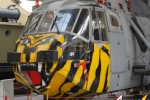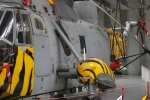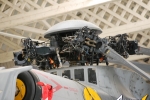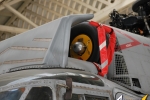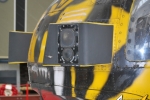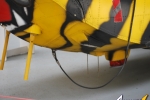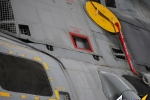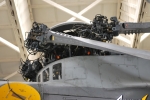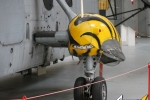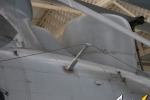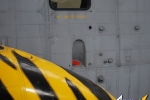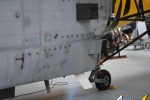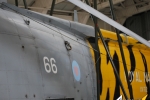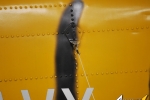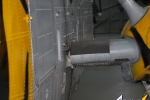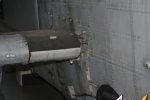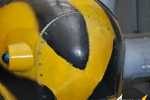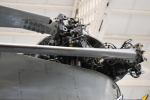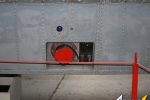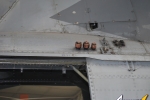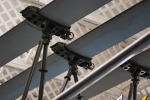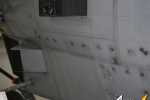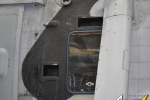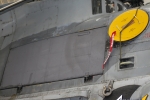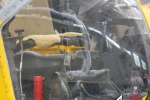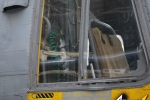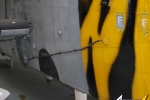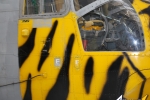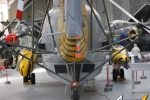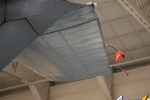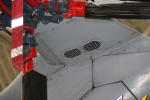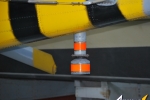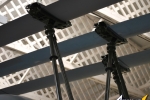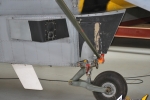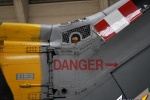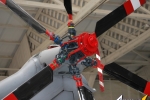1⁄1Walkaround: Westland Sea King HAS.6
6
Comments
The royal navy's Sea King
Westland Helicopters, which had a long-standing licence agreement with Sikorsky Aircraft to allow it to build Sikorsky's helicopters, extended the agreement to cover the Sikorsky SH-3 Sea King soon after the Sea King's first flight in 1959. Westland proceeded to independently develop the Sea King, integrating a significant proportion of components from British suppliers; key changes include the use of a pair of Rolls-Royce Gnome turboshaft engines and the implementation of an automatic flight control system. On this matter, authors Jim Thorn and Gerald Frawley stated that: "Despite appearances, Westland's Sea King [is a] very different aircraft from Sikorsky's".Many of the differences between the Westland-built Sea King and the original helicopter were as a result of differing operational doctrine. While the U.S. Navy Sea Kings were intended to be under tactical control of the carrier from which they operated, the Royal Navy intended its helicopters to be much more autonomous, capable of operating alone, or coordinating with other aircraft or surface vessels. This resulted in a different crew arrangement, with operations being controlled by an observer rather than the pilot, as well as fitting a search radar.
The British Royal Navy selected the Sea King to meet a requirement for an anti-submarine warfare(ASW) helicopter to replace the Westland Wessex, placing an order with Westland for 60 SH-3D Sea Kings in June 1966.The prototype and three pre-production aircraft were built by Sikorsky at Stratford, Connecticut and shipped to the United Kingdom to act as trials and pattern aircraft. The first of the SH-3Ds was initially fitted with General Electric T58s and, after being shipped from the United States, was flown in October 1966 from the dockside at Avonmouth to Yeovil airfield. The other three were delivered from the docks, by road to Yeovil, for completion with British systems and Rolls-Royce Gnome engines. The first Westland-built helicopter, designated Sea King HAS1, flew on 7 May 1969 at Yeovil. The first two helicopters were used for trials and evaluation by Westland and the Aeroplane and Armament Experimental Establishment; subsequent production Sea Kings were delivered to the Royal Navy's No. 700 Naval Air Squadron from August 1969 onwards.
By 1979, the Royal Navy had ordered 56 HAS1s and 21 HAS2s to meet the anti-submarine requirements; these were also configured for the secondary anti-ship role.The Westland Sea King was updated and adapted for numerous roles; subsequent variants include the HAS2, HAS5 and HAS6. Changes from initial production aircraft included an expansion of the cabin and upgraded engines.
Comments
Luciano, Awesome walk around. Will come in useful for an appropiate build.
JAN 28, 2018 - 10:18 AM
Hhmmm, interesting. The link takes me to the Features main page and I don't see a Sea King walkaround at all. Looks like the link is off.
JAN 28, 2018 - 05:39 PM
Yep the link is very off, here is the correct one Westland Sea King HAS.6
Gino, it says you are the moderator of this forum, so are you able to fix it?.
Andy
JAN 28, 2018 - 10:58 PM
Fixed. The picture is clickable now too.
Oh, wow!! I didn't realize the original post was from '12. No wonder the link was broken.
JAN 29, 2018 - 12:21 AM
Copyright ©2021 by Luciano Satornetti. Images also by copyright holder unless otherwise noted. The views and opinions expressed herein are solely the views and opinions of the authors and/or contributors to this Web site and do not necessarily represent the views and/or opinions of AeroScale, KitMaker Network, or Silver Star Enterrpises. Images also by copyright holder unless otherwise noted. Opinions expressed are those of the author(s) and not necessarily those of AeroScale. All rights reserved. Originally published on: 2012-07-05 00:00:00. Unique Reads: 13873





